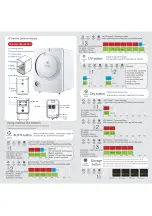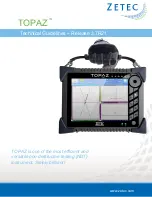
215627
55
Revision A
4.1.12
Checking and Adding Wheel Drive Lubricant
–
12 Bolt Wheels
The procedure for checking and filling the lubricant for wheel drives on 12-bolt wheels differs slightly from the procedure
for doing this on 10-bolt wheels.
DANGER
To avoid bodily injury or death from unexpected startup of the machine, always stop the engine and remove the key
from the ignition before leaving the operator
’
s seat for any reason.
$
%
Figure 4.26: Wheel Drive
–
12 Bolt
1.
Park the windrower on level ground.
2.
Rotate the wheel drive until fill/drain plug (A) is at the 12
o
’
clock position, and check plug (B) is at the 3 o
’
clock
position.
3.
Shut down the engine, and remove the key from
the ignition.
WARNING
Use caution when removing the plug, as the fluid may still be
under pressure.
4.
Remove check plug (B). The lubricant should be visible
through the port. Some lubricant may leak from the port.
5.
Reinstall check plug (B) and torque it to 7.5 Nm (6 lbf·ft).
6.
Reinstall fill/drain plug (A) and torque it to 24 Nm
(18 lbf·ft).
4.1.13
Checking Tire Pressure
The tires must be at the correct operating pressure. Check the pressure of the windrower tires using a tire pressure gauge.
$
%
Figure 4.27: Windrower Tires
Caster Wheel Tires:
Inflate all caster wheel tires (B) to 110 kPa
(16 psi).
Drive Wheel Tires:
For optimal performance, drive wheel (A)
tire pressures are determined by tire type, header size, and
additional options. For drive wheel tire pressures, refer to the
following table:
Table 4.2 Drive Tire Inflation Specifications
Header Type
Description
Installed Options
Weight Kit
Tire Type
Pressure
kPa (psi)
Draper Header
D115X
single reel
4.6 m (15 ft.), double
knife, timed
—
—
Bar
138 (20)
















































